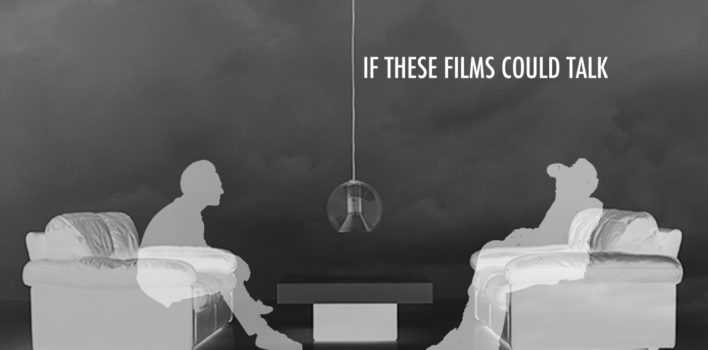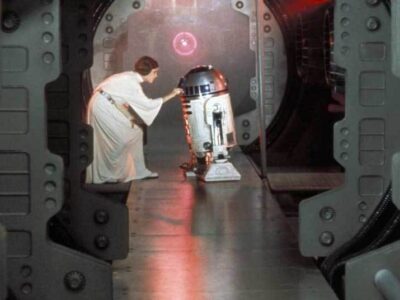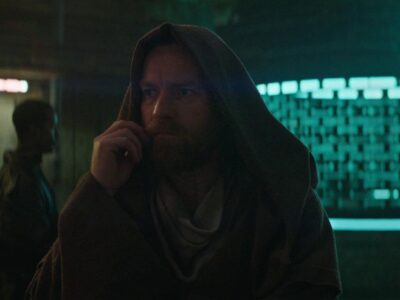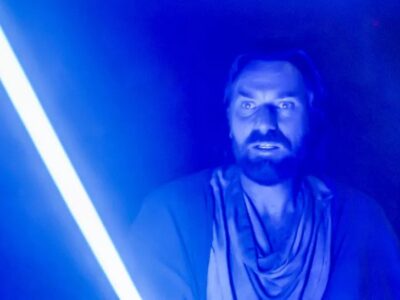Star Wars (1977) & Guardians of the Galaxy (2014)
Editor’s Note: Welcome to the first in a new monthly series at Reel World Theology where contributors bring two films–often from different cinematic eras–into conversation with one another in order to investigate the elements (themes, technique, script, character, etc.) of their cinematic worlds in such a way that our understanding of both films is enriched and expanded. David Atwell was brave enough to start the series off with a timely reflection on films from two franchises that are currently topping the Box Office. Enjoy.
———————————————————————————————————————————————————-
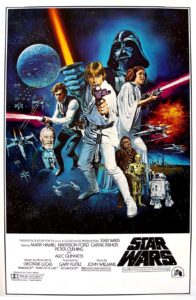 In a fantastical galaxy full of colorful creatures, a plucky group of freedom fighters, led by a human orphan who unexpectedly finds himself in possession of something a big bad is searching for, is thrust into the middle of an interplanetary conflict alongside a big tough guy who’s sweet but doesn’t speak intelligibly, a prickly mercenary who translates for him, a female warrior (who’s secretly the daughter of the big bad), all of whom break out of prison at the last second because of some fancy computer work by the shorter member of an odd-couple duo, and—
In a fantastical galaxy full of colorful creatures, a plucky group of freedom fighters, led by a human orphan who unexpectedly finds himself in possession of something a big bad is searching for, is thrust into the middle of an interplanetary conflict alongside a big tough guy who’s sweet but doesn’t speak intelligibly, a prickly mercenary who translates for him, a female warrior (who’s secretly the daughter of the big bad), all of whom break out of prison at the last second because of some fancy computer work by the shorter member of an odd-couple duo, and—
Sounds familiar, right?
2014’s Guardians of the Galaxy and 1977’s Star Wars: A New Hope do sound a lot alike on their surface. They have reminiscent ‘hero’s journey’ narrative structures and a lot of high-level cosmetic similarities, but they’re actually having a spirited debate with one another–a conversation about who the villain is, how to fight it, and what it takes to save the day.
The Power of the Dark Side
Both Star Wars and Guardians have well-crafted, terrifying, black-clad villains, with obscured faces and excellent capes, but they are very different in both goal and ambition. Their immediate aims are the same (to get a thing the heroes have), but their core natures are significantly different.
A New Hope pits its heroes against, of course, Darth Vader- a character so well-drawn, so immediately recognizable, that he has colored over four decades of cinematic villains, including those in the Marvel Cinematic Universe (MCU). But Vader is the evil figurehead of an even more evil empire; a tyrannical government bent on galactic domination.
Guardians, on the other hand, raises up Ronan the Accuser against an unexpecting galaxy. He, however, is not a patsy for some shadowy government; he works toward his own goals, seeking his own ends by applying his singular code of morality.
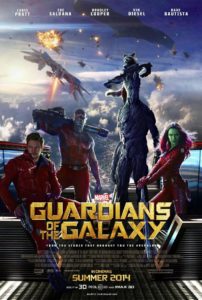 These films’ choice of enemies reflect the changing natures of our fears in the intervening time. When Star Wars lit up our screens, the Cold War was halfway through its deadly dance. Our fear was of a nation bent on our subjugation or destruction; a nation that would rise up and take us over. A nation with unbelievable firepower, led by a single, overbearing, villainous figure. Within a more modern context, we are rarely as concerned about a nation causing our demise than we are about a rogue individual. Terrorism and “lone gunmen” frighten us much more now than a modern nation with nuclear weapons.
These films’ choice of enemies reflect the changing natures of our fears in the intervening time. When Star Wars lit up our screens, the Cold War was halfway through its deadly dance. Our fear was of a nation bent on our subjugation or destruction; a nation that would rise up and take us over. A nation with unbelievable firepower, led by a single, overbearing, villainous figure. Within a more modern context, we are rarely as concerned about a nation causing our demise than we are about a rogue individual. Terrorism and “lone gunmen” frighten us much more now than a modern nation with nuclear weapons.
Of course, villains aren’t just mirrors for the audience, they’re also foils for the heroes. Vader, cold and conniving, is the opposite of Luke’s warmth and concern. They, as we find out later, happen to be connected by blood, which lends a strong air of destiny to the narrative. On the other hand, Ronan—serious, vengeful, murderous, and hateful—contrasts against Quill’s irreverent, laid-back, and friendly nature.
Neither Star Wars nor Guardians is inherently right or wrong about the nature of evil. Their dialogue is nuanced and illuminating, but I think they’re both right and wrong at different times: sometimes we face large, monolithic threats, and sometimes we face chaotic, individual threats. Yet, the villain isn’t the sole discussion these two films are having.
Because, to defeat our fears, we need an antithetical power.
The Source of Power
Since both films are heroic adventure stories, it should come as no surprise that the protagonists save the day at the end. Yet the movies tell a different story about the source of the power that invigorates them to save the day.
In Guardians of the Galaxy, the power is external: the purple Power Stone, a legendary and ancient Infinity Stone. It’s a power that can defeat evil in the hands of the Guardians, but its energy can also be used by Ronan to destroy Xandar. Not only is it external to Peter and the Guardians, but it is also singular: if Ronan has it, no one else does; if the Guardians have it, the galaxy is safe.
 In Star Wars, though, Luke finds the source of power within himself; a cosmic connection to the mystical “Force” that binds and connects the universe. The Force is the internal power that flows through him, guiding his torpedoes to their final destination in the Death Star core. It’s the internal power that pulls him into the battle in the first place. And the same internal power is mirrored in the villain’s command of the Dark Side of the Force: that same power source can be accessed and operated by Luke and Vader simultaneously.
In Star Wars, though, Luke finds the source of power within himself; a cosmic connection to the mystical “Force” that binds and connects the universe. The Force is the internal power that flows through him, guiding his torpedoes to their final destination in the Death Star core. It’s the internal power that pulls him into the battle in the first place. And the same internal power is mirrored in the villain’s command of the Dark Side of the Force: that same power source can be accessed and operated by Luke and Vader simultaneously.
It’s here where the dialogue between these two films takes an interesting turn. Guardians suggests that there is only one source and one way to access the power. Star Wars counters by showcasing a power that can be wielded by anyone with access to the Force at any time. However, both agree that this power has no inherent loyalty; both good and evil alike may wield it.
In this matter, neither film is perfectly correct, though they both have pieces to the puzzle. Yet while they disagree on the source of power, they do agree that just obtaining the power isn’t enough.
Power in the Right Hands
Just getting the power to defeat evil—whatever its form—isn’t typically the end of a narrative. Sometimes, it’s even the beginning of it. Power cannot destroy evil on its own; it must have a conduit. The true victory comes when the power is used. The climax of both of these films centers on the use of the power.
Luke Skywalker uses the Force by himself in Star Wars—with a brief training by Obi-Wan (and an even briefer reminder)—to destroy the Death Star, but for the Guardians of the Galaxy, the power is executed by a family of sorts. It’s established by the Collector (and, tragically, his slave) that the power within the stone cannot be wielded by a mere mortal. Even a group of people can only survive against it for a brief time. So when Peter takes hold of the stone, first Gamora, then Drax, Rocket, and perhaps even Groot (as a twig in Rocket’s pocket) must help him wield and use the power to destroy Ronan and restore peace.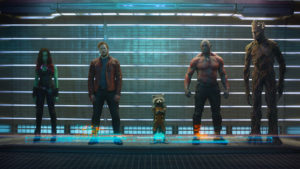
The merits of the “Chosen One” typology can be debated. Luke is worthy to wield the power of the Force by virtue of his birth, as a Force-sensitive person born to a Sith Lord. Conversely, without the contribution of the other Guardians, Peter Quill would not have been able to emerge victorious. Luke’s power is in his inherited status, while Peter’s is in the words spoken by way of his late friend’s sacrifice: “We are Groot.”
But neither film makes their case cleanly. While Luke’s decisive victory is his alone, he would have died were it not for Han’s timely return, nor would he have had a target without Leia retrieving the plans. Similarly, while the Guardians, as a group, were the victors against Ronan, they would not have been successful had Peter not been at least a little bit different than the average mortal.
While Guardians is right that there is no victory without family, the ability we have to defeat evil comes from the decisive act of a Chosen One–not Luke Skywalker, but like him.
Powered Up
Of course, these films were not made to rebut one another’s arguments. George Lucas and James Gunn are not locked in a decades-long argument about the nature of evil and how it is overcome. Looking at the arguments of their films, though, is helpful in seeing the core of their message. Both films revel in the message that evil can be overcome. It’s not easy—and we, individually, might not even be the ones to do it—but we can have hope that the fight is worthwhile.
Because the power to defeat them is at hand.
Or…you know, in your hand, as the case may be.


